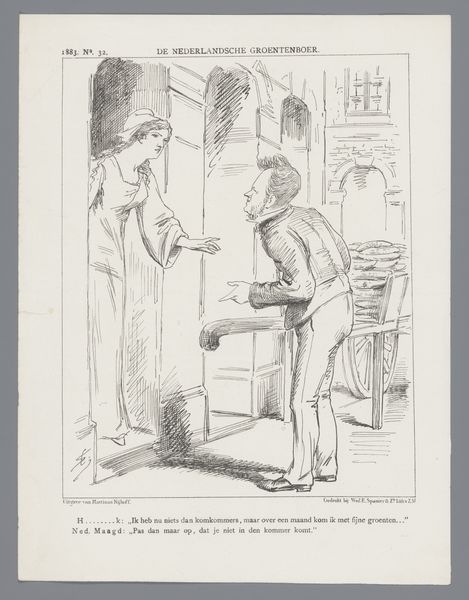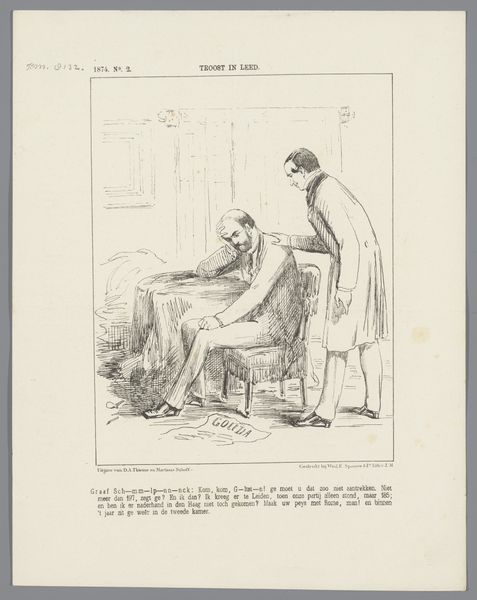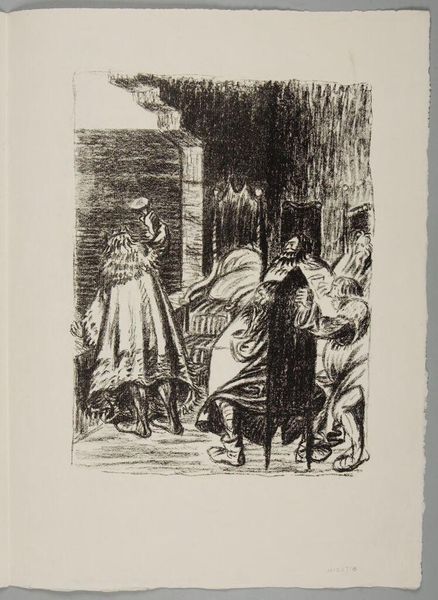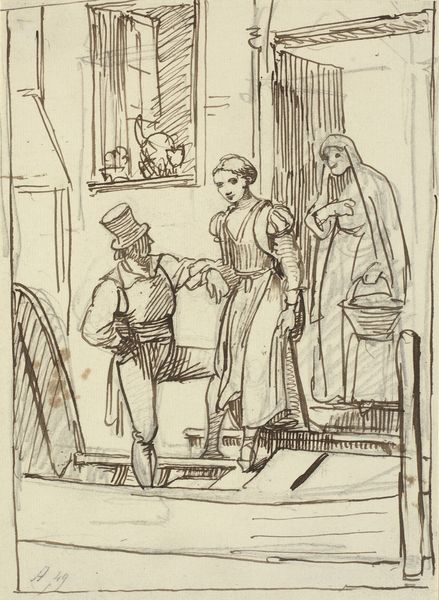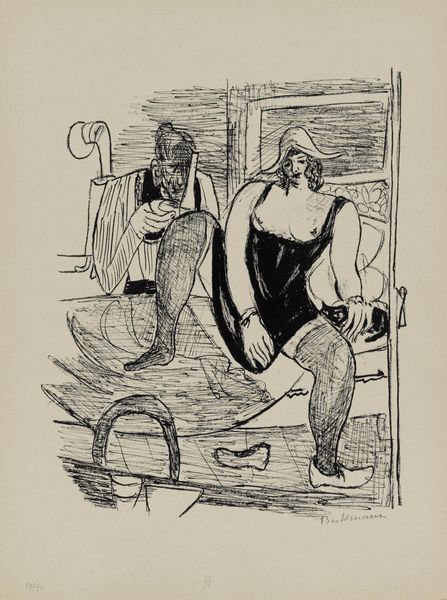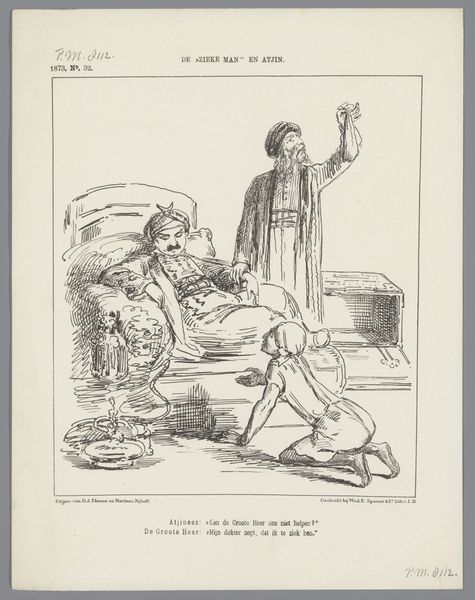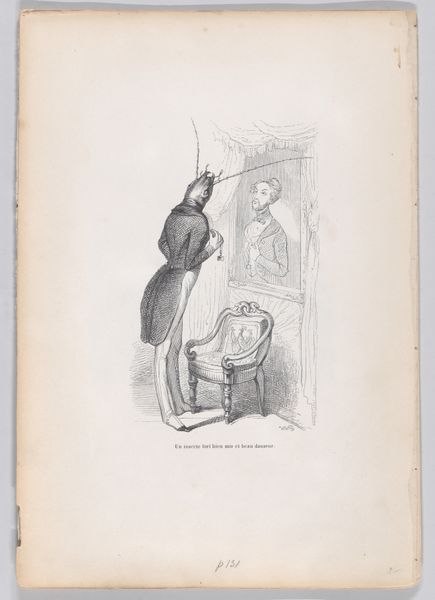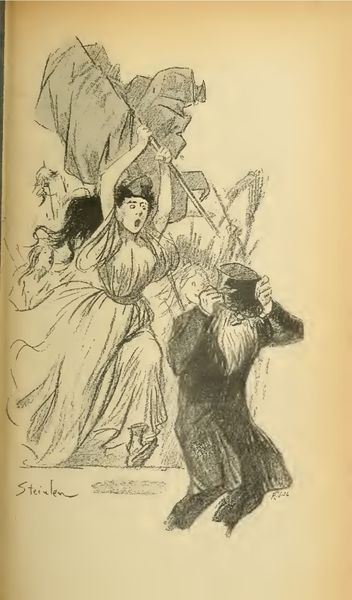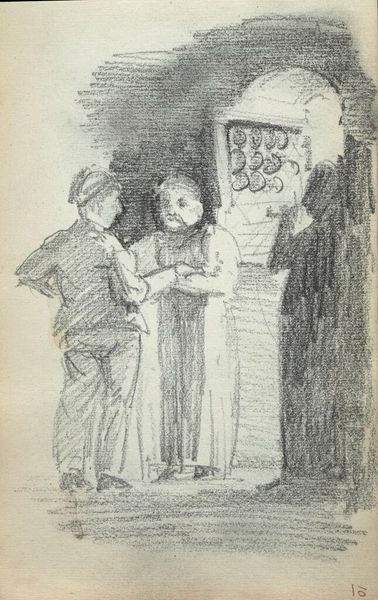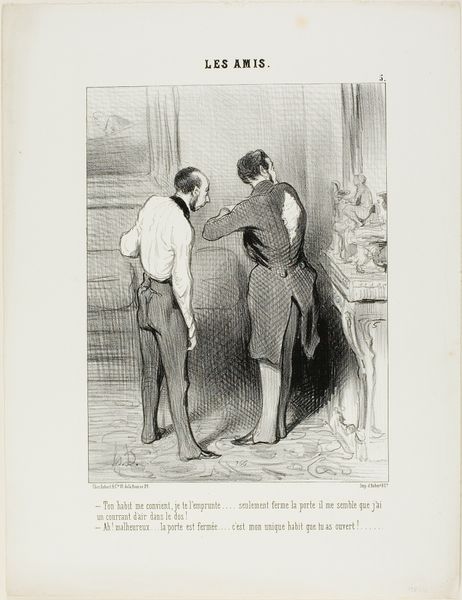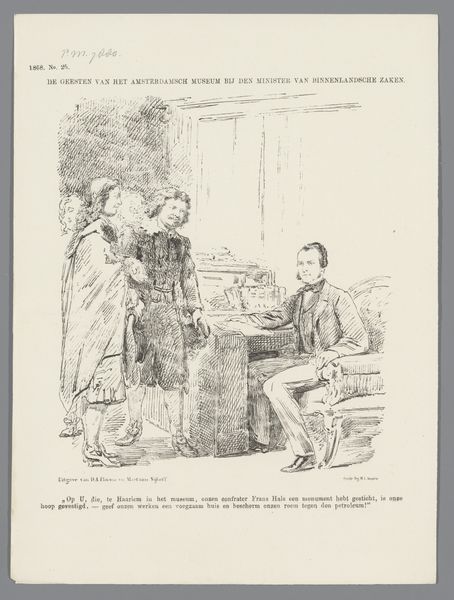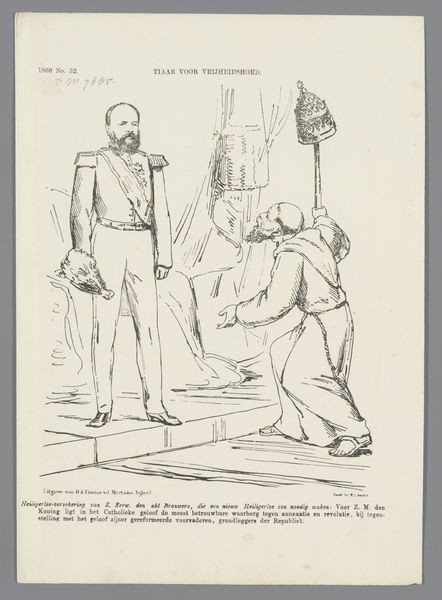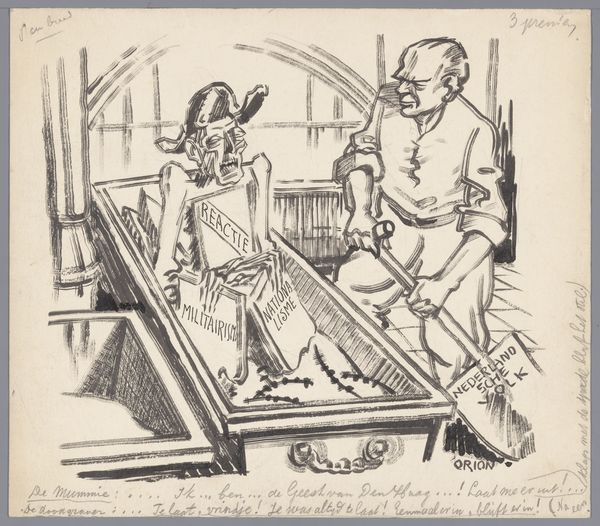
drawing, ink, pen
#
pen and ink
#
drawing
#
ink drawing
#
ink
#
pen
#
genre-painting
#
realism
Copyright: Public domain
Curator: This drawing, likely from around the turn of the 20th century, is by Théophile Alexandre Steinlen, titled "La Chanson Des Marechaux," and executed in pen and ink. Editor: It’s striking! So simple, really, but it feels...dusty. You can almost smell the sweat and metal, that tangible workingman’s atmosphere. The linework seems urgent, sketching in detail where it matters and leaving other areas more open. Curator: Indeed, the quick, expressive strokes are typical of Steinlen, especially in his genre paintings depicting everyday life. We see the scene unfolding in a humble workspace, maybe a blacksmith shop. Editor: A definite story is emerging, even without color. Is it me, or is there a feeling of, hmm, what would you call it? Disquiet? The light from the door suggests an outside world—what does that visiting character have to share? Curator: Fascinating, because historically, depictions of working-class life were often charged politically. Artists were reflecting the socio-economic tensions of the time, commenting on industrialization, labor rights. Editor: Knowing Steinlen's involvement with leftist politics, this image is loaded. Is that visitor bringing a message from the outside world? Does it shift his entire work day? A strike perhaps? This doorway could become an explosive space. Curator: Perhaps you’re right! This seemingly simple genre-scene speaks volumes when placed within the social movements bubbling in Europe at the time. I keep wanting to add to what I know happened beyond this work bench. Editor: Absolutely. I love art that invites your personal stories into its frame! A quick sketch suddenly turns into an entire social history. Thanks to art like this, history sings through individual choices and stories.
Comments
No comments
Be the first to comment and join the conversation on the ultimate creative platform.

